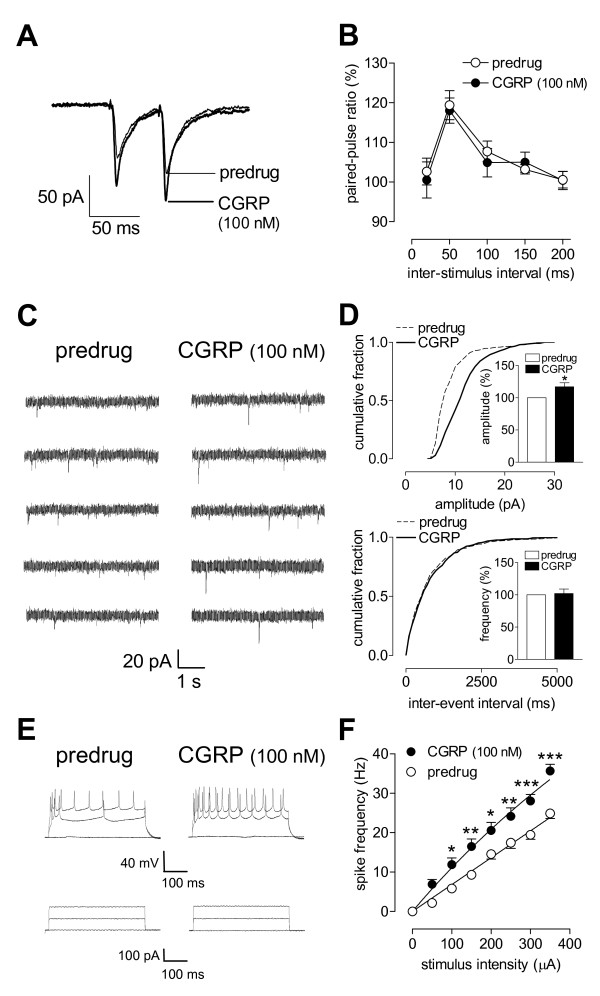Figure 2.
Post- rather than pre-synaptic effects of CGRP. (A, B) Paired-pulse ratio (PPR), a measure of presynaptic mechanisms, was not affected by CGRP (100 nM, 12 min). (A) Current traces (average of 8-10 EPSCs) recorded in an individual CeLC. Inter-stimulus interval, 50 ms. (B) CGRP had no significant effect on PPR in the sample of neurons (n = 12, P > 0.05, F1,110 = 0.24, two-way ANOVA). (C) Original current traces of mEPSCs recorded in an individual CeLC neuron in the presence of TTX (1 μM). CGRP (100 nM, 12 min) increased amplitude, but not frequency, of mEPSCs. (D) Cumulative distribution analysis of mEPSCs amplitude and frequency. CGRP (100 nM, 12 min) caused a significant shift toward larger amplitudes (n = 4, P < 0.001, Kolmogorov-Smirnov test) but had no effect on inter-event interval distribution. CGRP selectively increased mean mEPSC amplitude (P < 0.05, paired t-test) but not mean frequency (n = 4; see bar histograms showing data normalized to predrug control). (E) Number of action potentials evoked in a CeLC neuron by direct intracellular injections of depolarizing current pulses (500 ms) of increasing magnitude (lower traces) increased during superfusion of CGRP (100 nM, 12 min; upper traces). (F) CGRP increased input-output functions significantly (n = 11, P < 0.0001, F1,156 = 82.12, two-way ANOVA). Recordings were made in slices from naïve (untreated) animals. Neurons were recorded at -60 mV. Symbols and error bars represent mean ± SEM. * P < 0.05 (paired-test).

